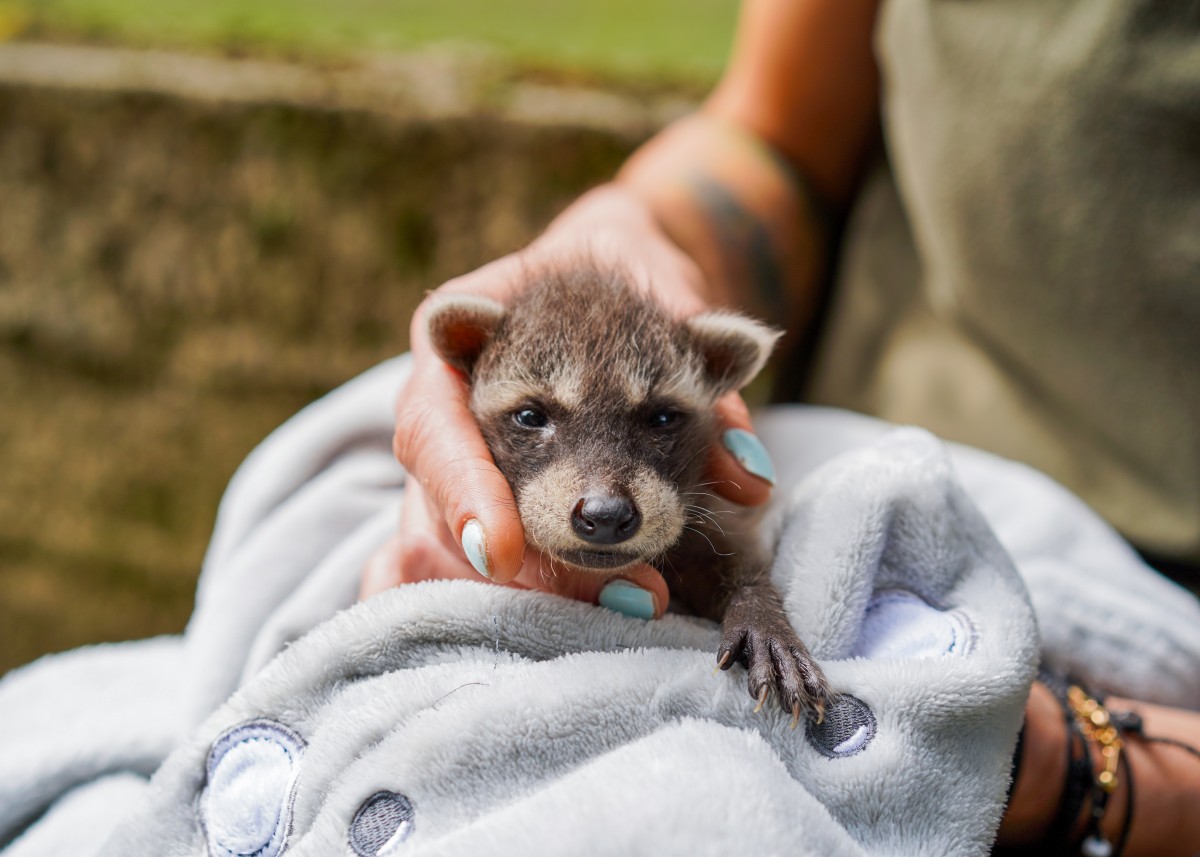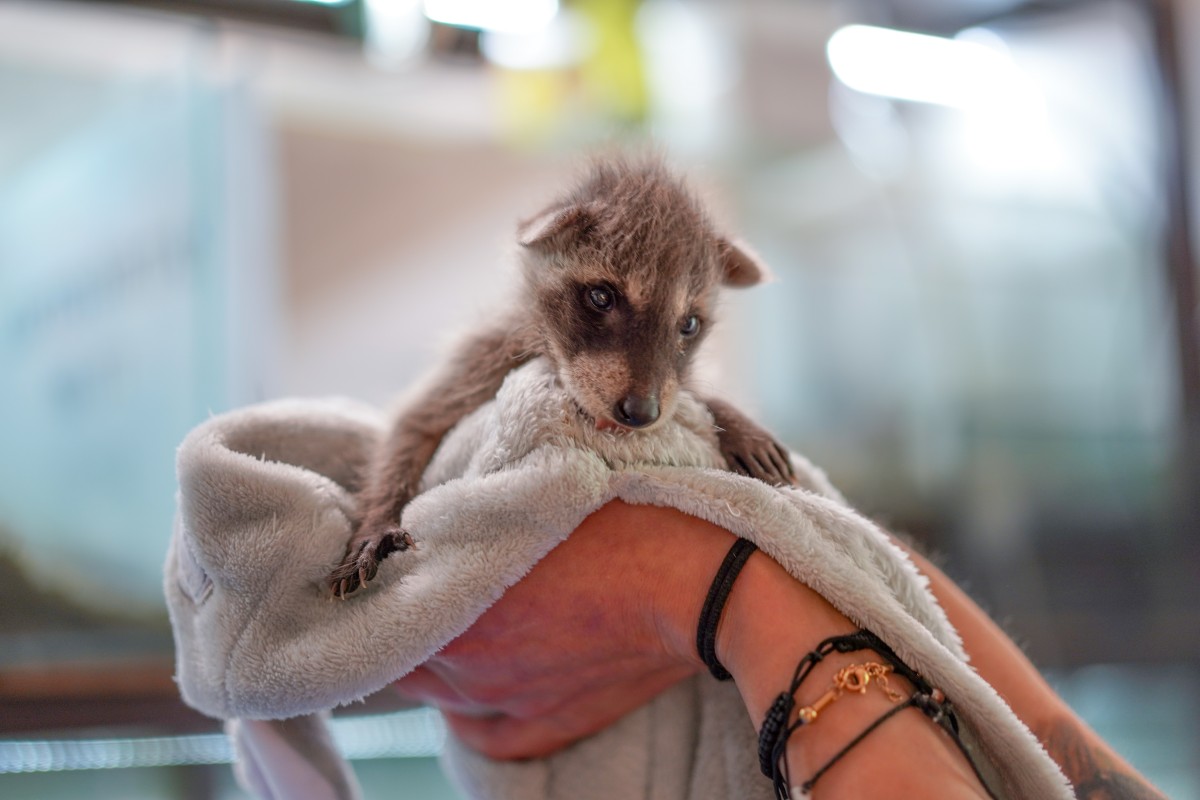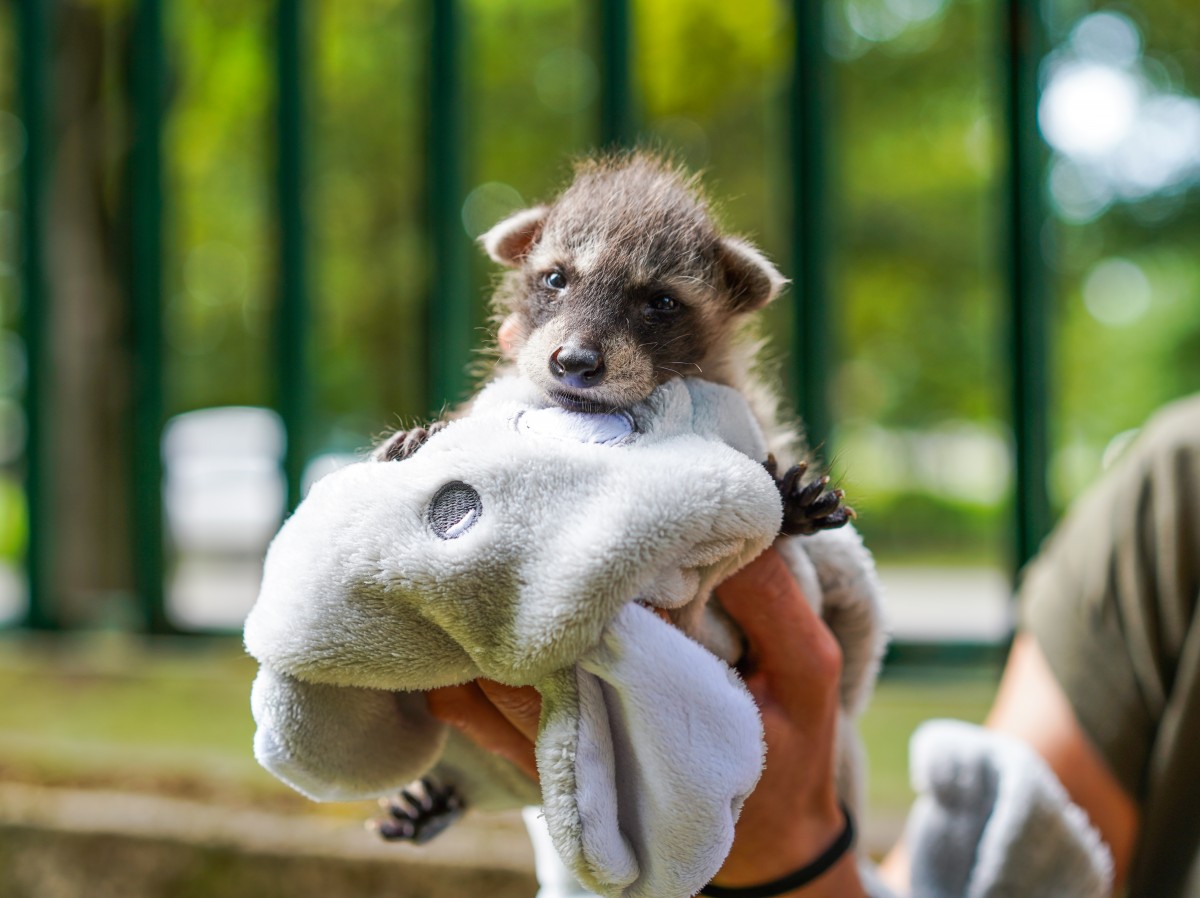Since the Debrecen Zoo is home to the largest zoo population of raccoons in Hungary, it comes as no surprise that they welcomed a newborn raccoon once again.
Born after a 65-day gestation period, little Simon had an initial weight of only 63 grams. He is being hand-raised by keepers but, nevertheless, he is in good health and has an excellent appetite, now weighing half a kilo. Born completely blind, baby raccoons are to be treated much like human babies as they require regular bathing, nursing and feeding. For now, Simon is exclusively fed kitten formula every two hours.
Best recognized by their iconic black-and-white striped tails and black “masks,” raccoons (Procyon lotor) are one of the 18 species belonging to the family Procyionidae. They are native to the Americas, specifically the areas with bodies of water nearby, but they also began to heavily populate Europe, especially Germany, in the 1930s. Highly adaptive, they thrive wherever there are human populations. In Hungary, raccoons are considered an invasive species; their presence in the wild is rather insignificant, but it is forbidden by state law to keep them as pets since 2010.
Threatened primarily by excessive hunting as well as frequent road accidents in their historic ranges, raccoons are included in the International Union for the Conservation of Nature (IUCN) Red List of Threatened Species.
press release





















